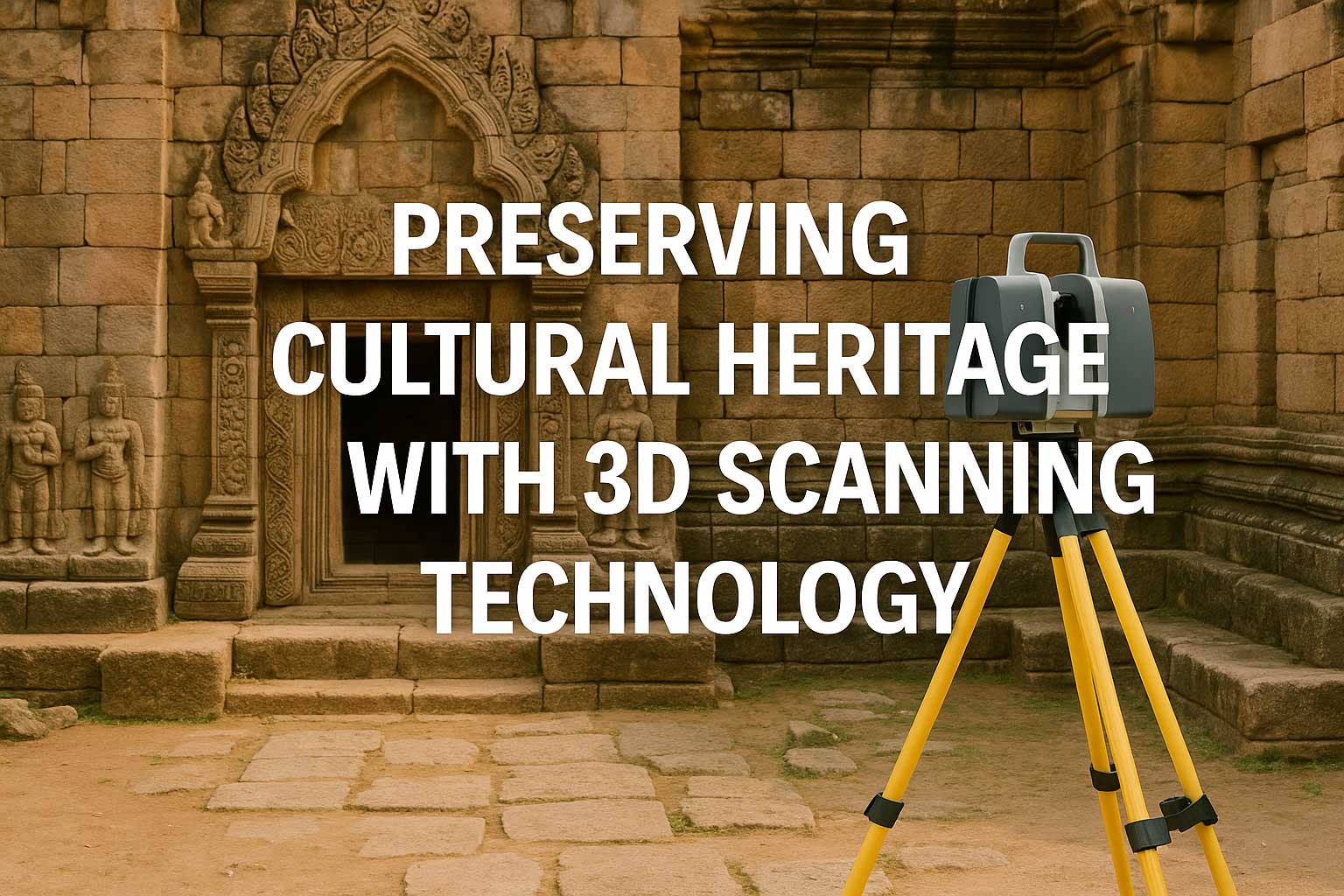Learn how 3D scanning is revolutionizing cultural heritage preservation — from ancient monuments to museum artifacts. Digitize, document, and protect history with precision.

Preserving Cultural Heritage with 3D Scanning Technology
Why Digital Preservation Matters
Cultural sites face constant threats: time, weather, tourism, pollution, and conflict. By creating accurate 3D models, we can:
- Document current conditions with millimeter precision
- Enable virtual access for education and tourism
- Create digital backups in case of damage or destruction
- Support restoration with dimensionally accurate references
Key Use Cases in Cultural Heritage
- Monument Documentation: Digitally capture buildings, statues, and ruins for research and conservation.
- Museum Artifact Archiving: Create digital twins of sculptures, ceramics, and textiles for VR/AR tours or replicas.
- Site Monitoring: Track changes over time to identify structural threats or weathering patterns.
- Restoration Planning: Support conservation projects with accurate baseline data for repair work.
Scanning Workflow in Cultural Heritage Projects
- Perform high-resolution scans using tripod or handheld scanner
- Process point clouds and meshes using software like RealityCapture, ReCap, or Artec Studio
- Generate textured 3D models or orthophotos
- Deliver files in formats for VR, research, or 3D printing
- Archive data in cultural repositories or cloud systems
In many cases, teams also use drone photogrammetry to complement ground-based laser scans.
Recommended Equipment
For heritage projects, we recommend:
- Handheld scanners (e.g., Artec Leo, Peel 3) — great for statues, small relics, and confined interiors
- Tripod-mounted scanners (e.g., Leica RTC360, FARO Focus) — ideal for large monuments and facades
- Drone-based photogrammetry — for aerial views and hard-to-reach details
Real-World Examples
- The Bamiyan Buddhas in Afghanistan were digitally reconstructed using laser scans after their destruction
- UNESCO World Heritage sites like Machu Picchu and Pompeii have been 3D scanned for documentation
- Museums in Europe and Asia now offer virtual walkthroughs using real 3D data
Conclusion
3D scanning is revolutionizing how we preserve, study, and share our global heritage. From protecting fragile artifacts to bringing lost worlds to life in VR, this technology empowers cultural institutions to safeguard history — permanently and accessibly.
Interested in starting a digital preservation project? Explore our recommended scanners or learn more in our heritage scanning guide.

Leave a Reply